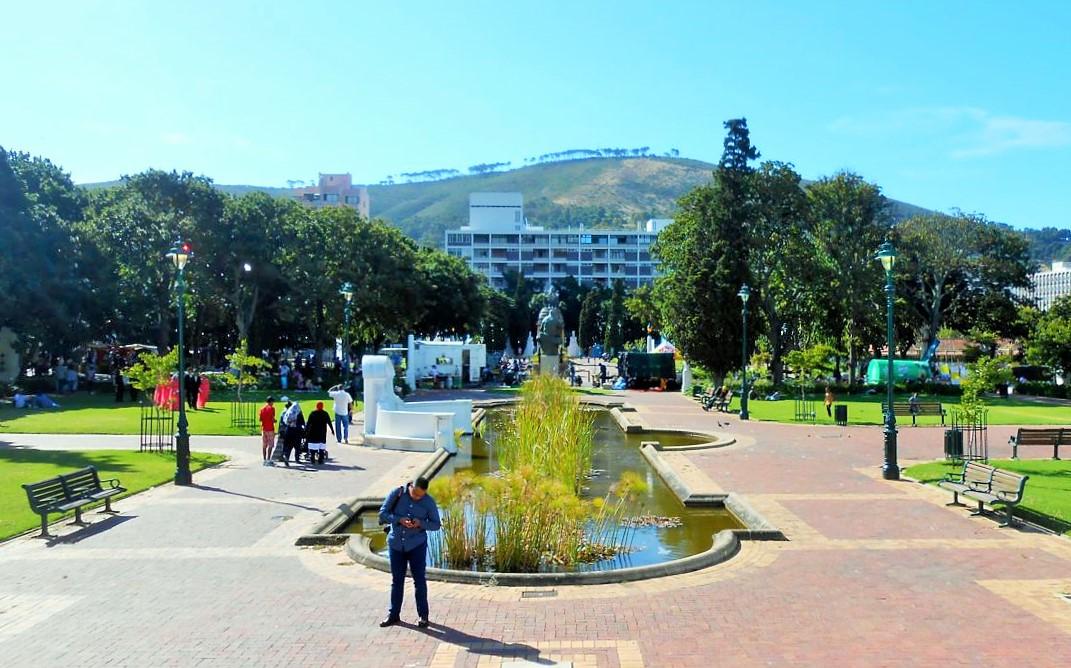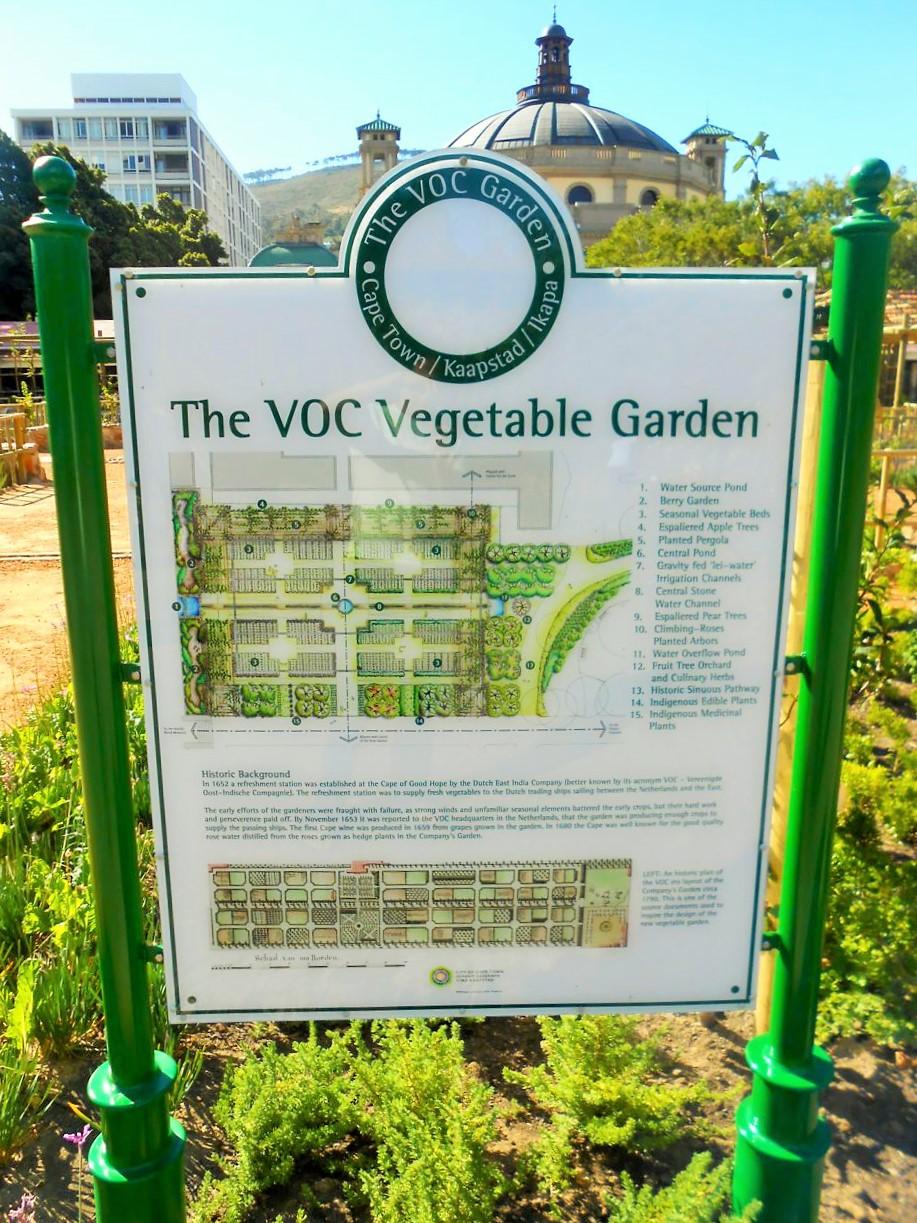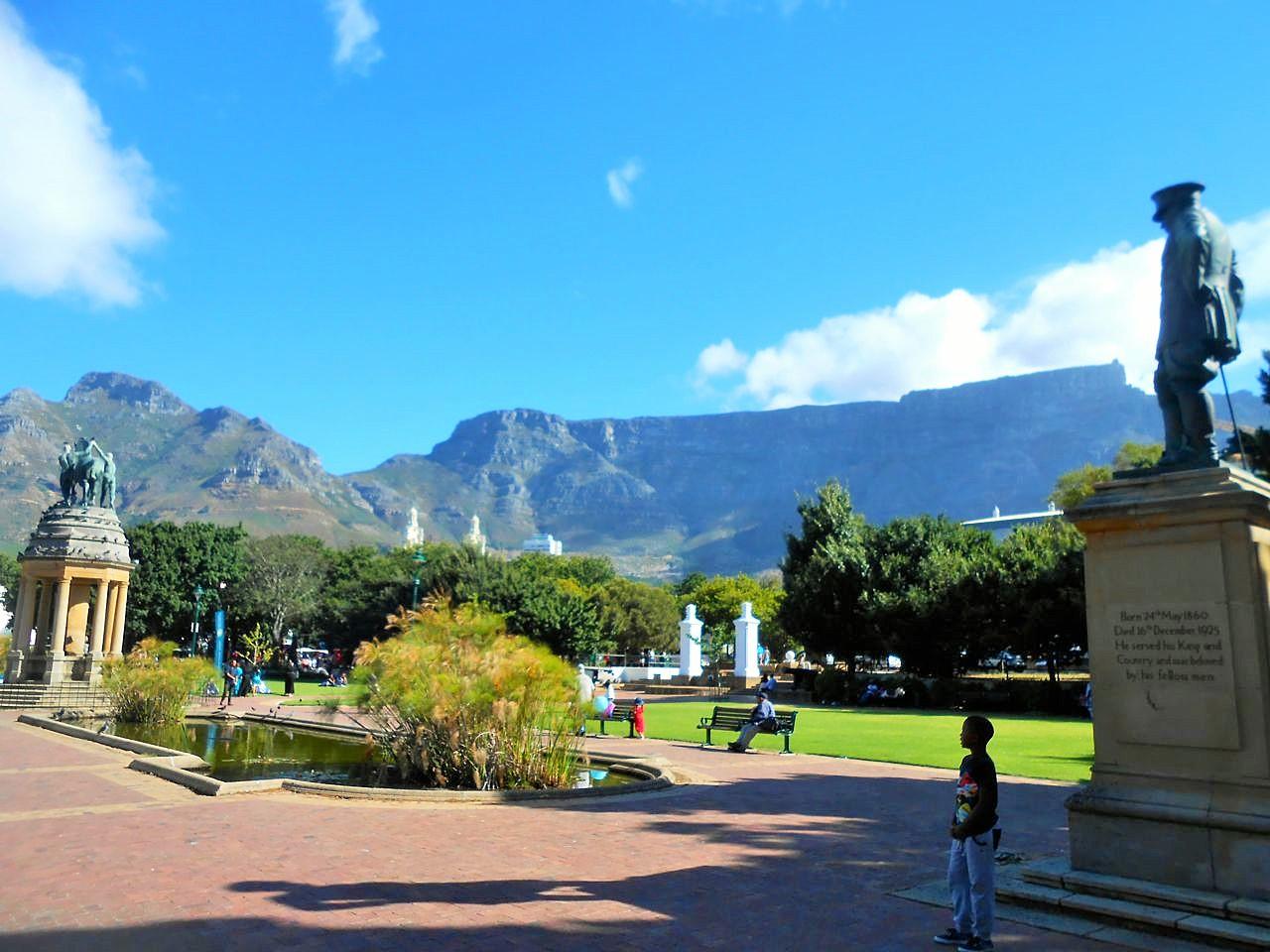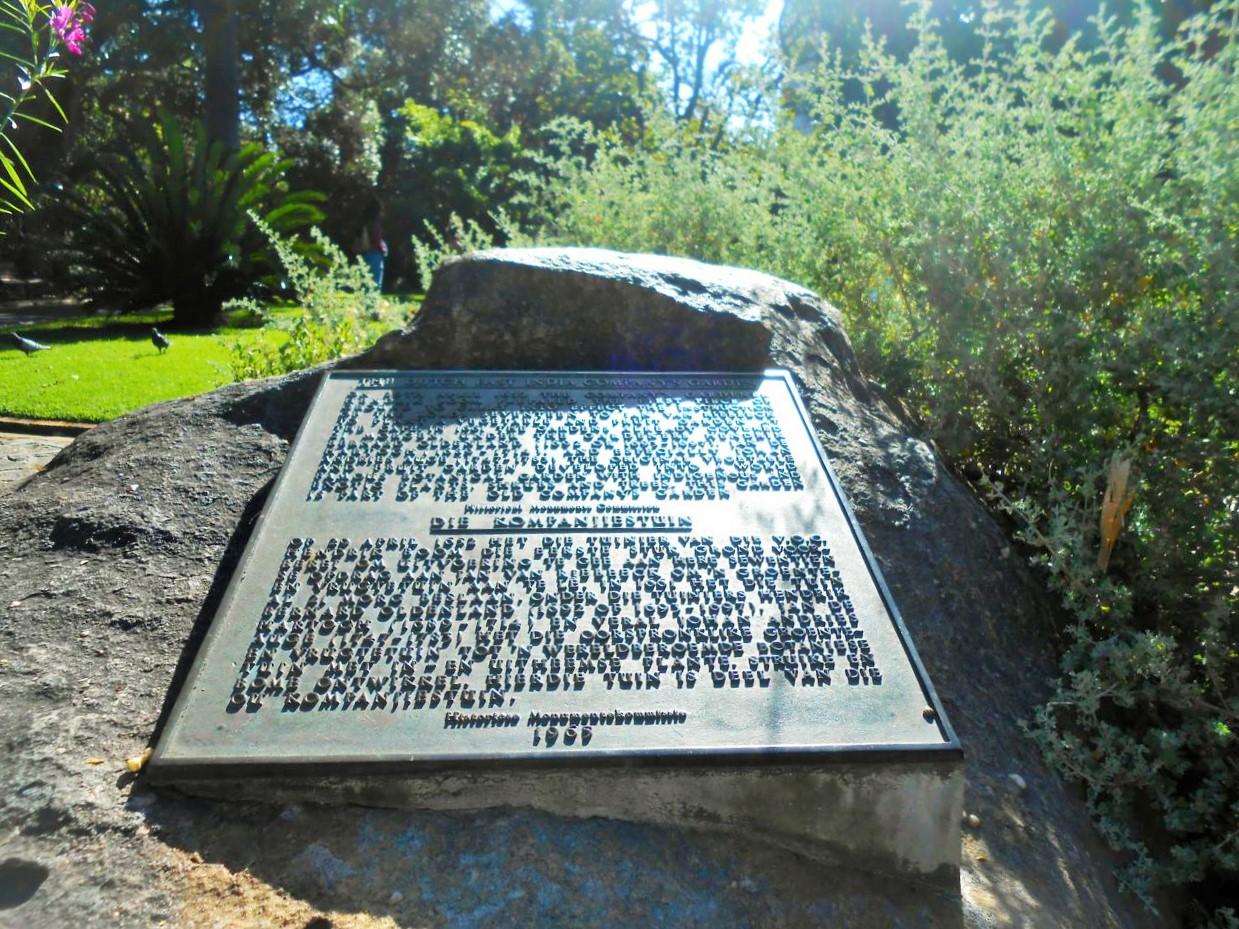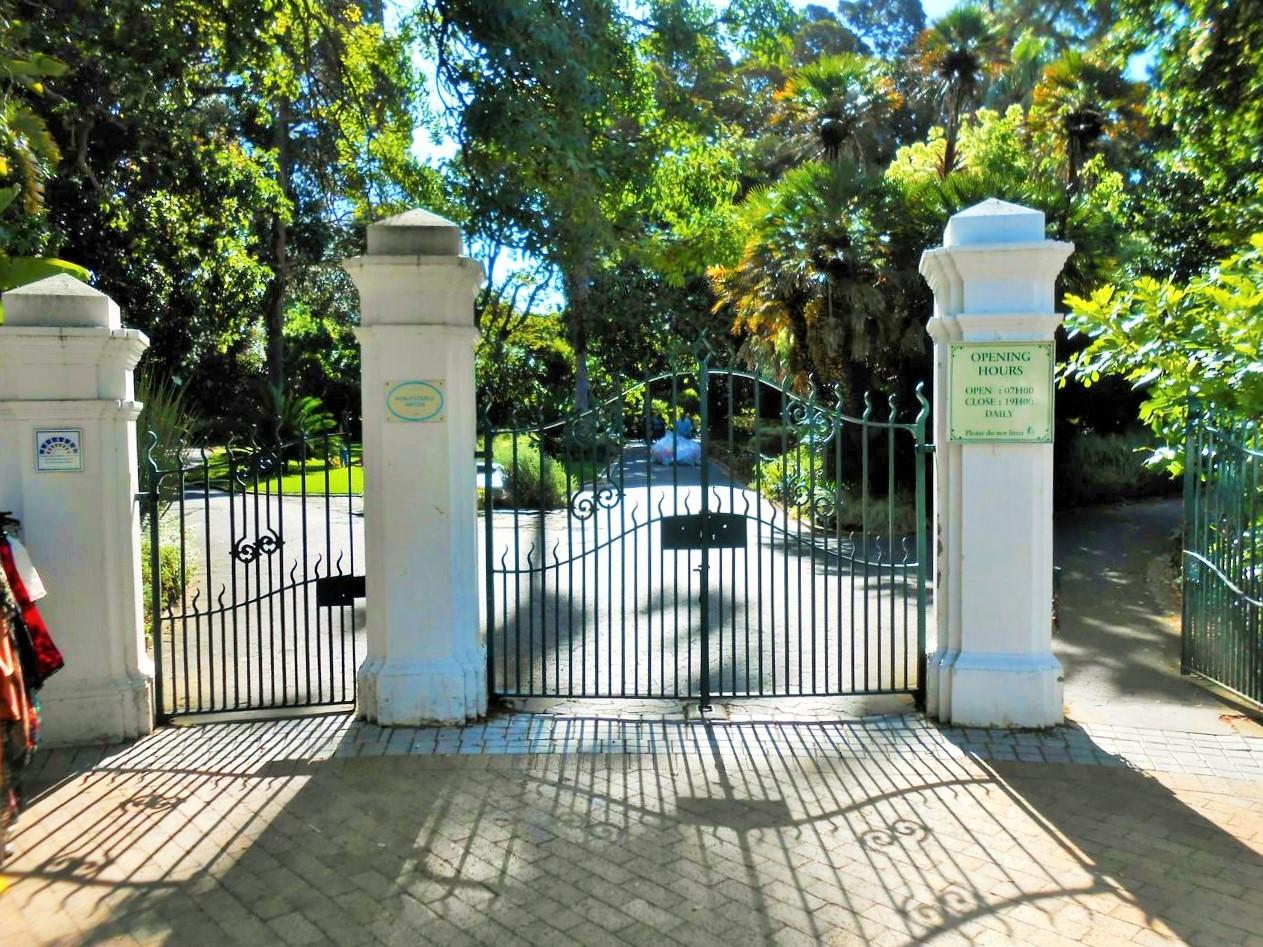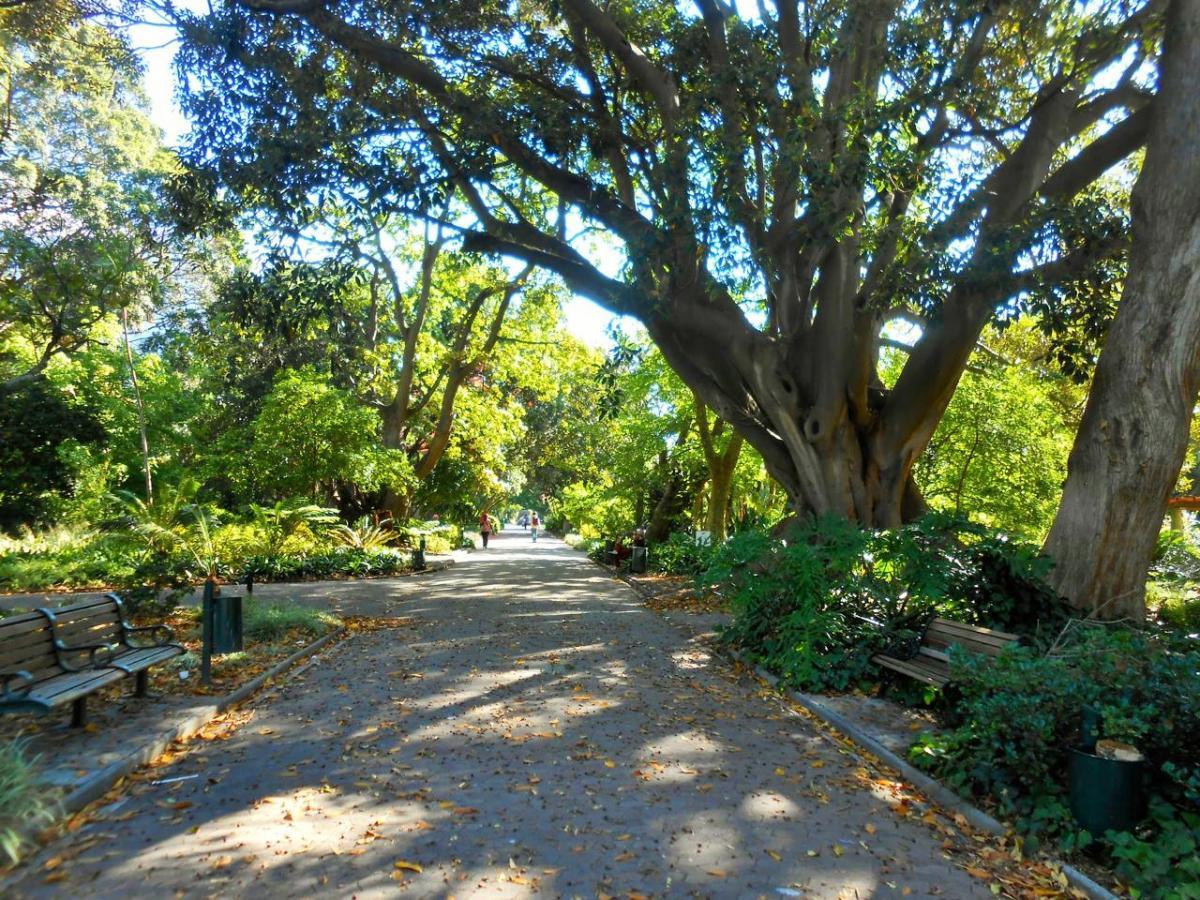
Disclaimer: Any views expressed by individuals and organisations are their own and do not in any way represent the views of The Heritage Portal. If you find any mistakes or historical inaccuracies, please contact the editor.
The article below, compiled by then City Engineer J.G. Brand, appeared in a 1983 edition of Restorica, the journal of the Simon van der Stel Foundation (today the Heritage Association of South Africa). It provides a fascinating look at the origins and development of the Company's Garden in Cape Town. Thank you to the University of Pretoria (copyright holders) for giving us permission to publish.
Hanging out in the Company's Garden (The Heritage Portal)
The birth of the Company's Garden can be traced back to 1644 when the Dutch ship the "Haarlem" was driven ashore at Bloubergstrand. The crew managed to salvage the cargo and ship's stores. Leaving these under guard, the rest of the crew set out towards the now Cape Town and settled next to a stream of fresh water, the Fresh River. Here, anticipating a long, they sowed some vegetable seeds they had salvaged and were soon able to reap crops which supplemented the food they had been bartering from with local people.
Some six months later the survivors and their cargo were picked up by the Dutch fleet returning from Batavia. On their return to the Netherlands two of the survivors, Leendert Janz and Nicolaas Proot, submitted a report to the Directors of the Dutch East India Company stressing the advantages which could be derived from a refreshment station at the Cape. The report was accepted and Jan van Riebeeck was appointed commander of the expedition. His instructions stated inter alia: "As soon as you are in a proper state of defence you shall search for the best place for gardens, the best and fattest ground in which everything planted or sown will thrive well." His three ships, the "Drommedaris", "Reiger" and "Goede Hoop" set sail from the Netherlands in 1651 and arrived in Table Bay on the 6th April 1652.
From Van Riebeeck's diary we learn that master gardener Hendrik Boom prepared the first ground for the sowing of seed on the 29th April 1652. The size of the Garden slowly increased until some ten years later it had grown to 21 1/10 morgen (18,1 ha) and incorporated the site of the present-day Garden. Apart from a vegetable and fruit garden, Boom also laid out a herb and medicinal garden. Once these were well established, various ornamental plants were introduced, amongst which were oak and pine trees and also roses, the first of which were reported to have bloomed on the 1st November 1659.
Explanation board for the VOC Vegetable Garden (The Heritage Portal)
Simon van der Stel, the eleventh Governor of the Cape, arrived in 1679. Under his guidance and with the very able help of master gardener Hendrik Bernard Oldenland and his assistant Jan de Hartogh, the Garden underwent a complete tranformation, though its primary purpose remained the growing of vegetables and fruit. His new layout included an elaborate system of canals and water furrows fed by the Fresh River.
During Van der Stel's Governorship the first buildings were erected on the land, namely the pleasure lodge, church, slave house and hospital. To accommodate part of the encroachment, Van der Stel shortened the lower end of the Garden and extended the top end towards the mountain. This however did not compensate fully; the Garden shrank to 19 morgen (16,3 ha). Many more buildings were to follow, eventually whittling the Garden down to the comparatively small section which remains today.
A scene from the Company's Garden in 2014 (The Heritage Portal)
lt is due to the efforts of this tree-conscious Governor that Quercus robur, the English oak, was planted throughout the Peninsula and its surrounds. He not only planted them on ground under his control, but also offered farmers 100 trees each for beautifying their own properties.
Jan Andries Auge arrived in the Cape in 1747 and was appointed assistant gardener in the Company's Garden. Rijk Tulbagh became Governor in 1751 and appointed Auge as Superintendent. Auge undertook many expeditions in search of indigenous plant material and it is generally agreed that some of the oldest indigenous trees in the Garden were planted by him. He is also regarded as having led the Garden in more of a botanical direction, shifting the emphasis far more towards the growing of ornamental plants. He retired in 1783.
In 1799 during the first British occupation (1795-1803) Sir George Young was appointed Governor. Upon his arrival he found the Garden to be in a state of neglect. One of his first acts was to stop all access to the Garden. He then spent public money beautifying the Garden around Government House, apparently for his own benefit. After a great deal of public pressure he decreed that those wishing to enter the Avenue could do so if they undertook to sign a book at the entrance. Few did and in 1801 his Governorship was ended and people could once more freely enter the Garden. Part of the high wall he started to build to enclose the Garden still stands in Parliament Street.
In 1848 Sir Harry Smith, the then Governor, appointed a board of commissioners whose function was to receive subscriptions and make preliminary arrangements for the establishment of a Botanic Garden and thereafter the management thereof. Although it was generally agreed that the site was not an ideal one, it was central, whereas the other proposed site on the Wynberg side of Table Mountain was too great a distance from town for serious consideration at that time.
The board had £1264-10s to start the Garden, its size then being 5,3 ha. In 1881 Professor McOwen was invited to take charge of the Botanical Garden and develop it. The Cape Town Municipality took over the Garden from the Cape Government in 1892. An extract from a report the following year stated: "Smoking is no longer prohibited and the removal of the restrictions seem to be greatly appreciated if one may judge by the number of gentlemen to be seen strolling around or seated under the trees from twelve to two enjoying meanwhile their cigar or pipe." The character of the Garden began gradually to change as emphasis on the bontanical and educational aspects diminished. By the time Kirstenbosch Botanic Gardens were established in 1913 the Company's Garden had evolved into a public pleasure park.
Since then its layout has remained basically unchanged. Its function as a place of peace and leisure has increased as the surrounding city has grown. The Garden was proclaimed a National Monument in 1962, at which stage its size was (and still is) 3,2 ha [Provincial Heritage Site today].
Old National Monuments Plaque Inscription (The Heritage Portal)
One of the entrances to the Company's Garden. Note the Heritage Western Cape plaque on the left. (The Heritage Portal)
Today the future of the Garden is secure and South Africans may rest assured that the generations to follow will be able to enjoy it just as much as it is enjoyed today.
Note - The assistance in the preparation of this article of Mr. F.A. Roelofse, Director of Parks and Forests, City Engineer's Departrnent, is gratefully acknowledged.
Comments will load below. If for any reason none appear click here for some troubleshooting tips. If you would like to post a comment and need instructions click here.

